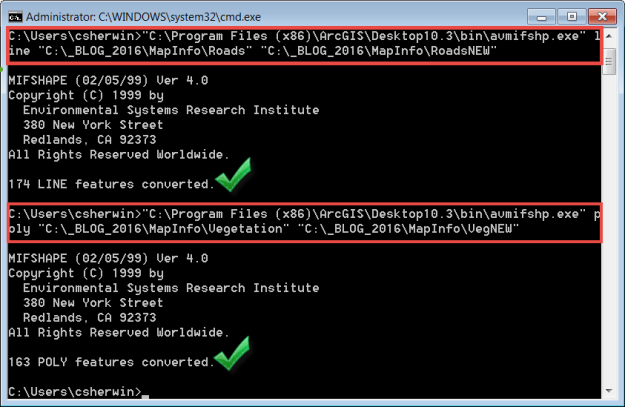The aim of this blog is to share with you a somewhat hidden workflow that easily allows any ArcGIS for Desktop user to convert MapInfo file formats. The MapInfo Interchange Formats in question here are (i) the .MIF file, which contains the graphics or actual points that represent the objects, and (ii) the .MID file, which contains any corresponding textual information about the objects.
For anyone that has needed to convert MapInfo file formats into Esri’s shape file format, for use in the multitude of ArcGIS workflows; then you would know this process may have involved any of the following:
- installing 3rd party software (such as OGR2GUI),
- having the awareness to export to shape file format using MapInfo’s Universal Translator, or
- using the ArcGIS Data Interoperability extension (which by the by provides a zero-coding environment to read, transform, and write in hundreds of GIS- and business-friendly formats from files, databases, and the web)
So here’s the easy (and somewhat hidden) method to convert any MIF/MID into Esri’s shape file format. At all supported versions of ArcGIS for Desktop is a converter executable entitled “avmifshp.exe“. Located in your ArcGIS binaries directory, “C:\Program Files (x86)\ArcGIS\Desktop10.3\Bin”, this executable is able to be run within the command line (cmd.exe) as per the following:
The syntax to successfully operate this converter is:
avmifshp.exe MIFSHAPE [LINE/POINT/POLY/TEXT] [mif_file] [shape_file]
Please note: that you must not specify the extensions for the input and output files (.MIF and .SHP, respectively)
So from the above example: if you have a MapInfo MIF dataset, such as “C:\_BLOG_2016…Roads.MIF” (optionally accompanied by “C:\_BLOG_2016…Roads.MID” which contains the object attributes), you can convert this to a shape file with these steps:
- Open a command prompt (on Windows: Start > All Programs > Accessories > Command Prompt)
- In the black Command Prompt window type:
“C:\Program Files (x86)\ArcGIS\Desktop10.3\Bin\avmifshp.exe” line “C:\_BLOG_2016\MapInfo\Roads” “C:\_BLOG_2016\MapInfo\ROADS_SHAPE” - Hit Enter
This creates a line shapefile “C:\_BLOG_2016\MapInfo\ROADS_SHAPE.SHP”, similarly, you could have entered “point” or “poly” or “text” if that correlates to the geometry (dataType) being converted.
Please note: this process does not create metadata or spatial properties for the output file (such as a defined GCS, geographic coordinate system or PCS, projected coordinate system), so you will have to manually specify such information using describe functions (python) or ArcGIS for Desktop geoprocessing tools.
I hope this has been of use to you, if you have any questions, please email them through to me at csherwin@esriaustralia.com.au
Chris Sherwin


Describes exactly what I need. I have a .MID and a .MIF-file. But I only succeed in creating a .shp- and a .shx-file. The command promt says “Could not create DBASE part of shape file. Unable to finish conversion.” What am I doing wrong?
Use the Data Interoperability extension for ArcGIS Desktop instead. A free 60-day evaluation version of the extension is available, and will read and convert over 100 data formats. The executable described here only supports MapInfo MIF and MID files up to version 4, which is ancient in computer terms.